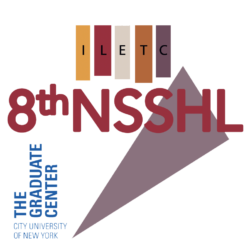To watch the presentation, enter password nsshl2021 below:
6 Replies to “Yo creo que yo no sé: Bilingual Children’s Spanish Subject Pronoun Expression (Sarah Lease, Emily Bird-Brown, Sandra Martínez Lopez, Naomi Shin)”
Comments are closed.


8th National Symposium on Spanish as a Heritage Language
Thursday, May 13th–Saturday, May 15th, 2021
To watch the presentation, enter password nsshl2021 below:
Comments are closed.
Dear Sarah, Emily, Sandram and Naomi,
Thanks so much for this interesting study. It was a great decision to compare acoss populations of bilingual children. The findings are also interesting (its not simple to interpret results) so I liked the Yes and No comments because knowledge and use of language, is complex. Thanks again for a cool presentation.
Best,
Pablo
Hi Dr. Requena,
Thank you for your comments, and we enjoyed your presentation as well!
Thank you for sharing this work! It was great to know more about your study!
I’ve been planning to work with verb frequency in a study on morphosyntactic variation, so I am really excited that you looked at frequency as well! I was wondering if you have any thoughts on why frequency was not significant in the first analysis. Also, have you been able to take a look at collocations in the Mexican Spanish and Washington and Montana corpora? If so, have you observed any specific patterns?
Thank you so much! ?
Hi Isabella! It’s great to hear you will be doing work with frequency soon. Make sure to check out Erker and Guy (2012) if you haven’t yet!
With respect to your comment, in an earlier version of our project when each independent variable was analyzed separately with chi-squares in each corpora lexeme frequency by itself was not significant for M and WA/MT children. But it of course was for LA kids. When we submitted the full data set to the regression model that included all possible predictors other variables (language setting, GP, Reference…) better accounted for predicting expression. So it was not significant in the model because a) there were no significant differences between expression for M children and WA/MT children and b) the other variables were better predictors of expression in that full data set. It might also have to do with the age of the children because per many authors (pj: Shin, 2016) younger children have lower expression rates. A wider range of ages would help to further examine that.
Also, in Erker & Guy (2012) they find that it’s the frequency of the other variables that predict expression, but our study was limited to probe for direct frequency effects. Given that many collocations in the other two corpora were null subject we might need to further examine frequency by looking at the frequency of each factor (present, imperfect..) of each variable (tma).
“collocations in the Mexican Spanish and Washington and Montana corpora” — Dr. Naomi Shin has an excellent discussion of this in her 2016 paper! In our case many of the frequent verbs by these groups were null subject (no sé was much more common in these two groups than yo no sé). Still could consider these collocations, but they are just expressed more often without the pronoun.
Thank you for your questions! If you have more comments and the discussion boards are closed please feel free to reach out to me or another author through email.
-Sarah
Thank you so much, Sarah! This is great!
I’ll make sure to check these references and to save your contact for the future. ?
Very nice work with frequency. Thank you!